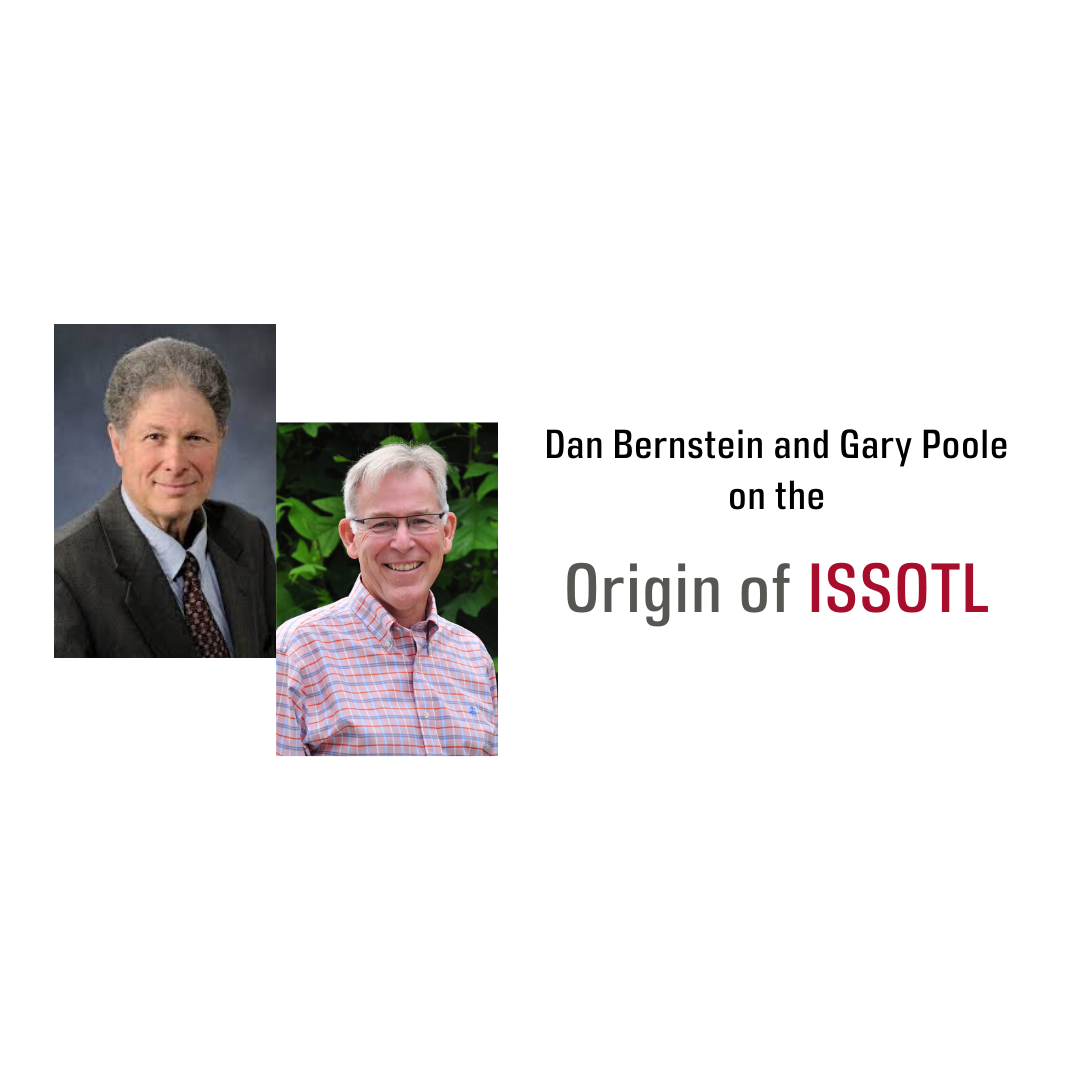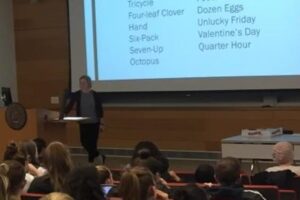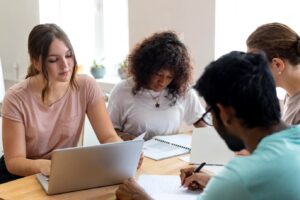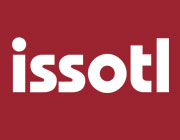
Origin of the International Society for the Scholarship of Teaching and Learning
Prepared by Dan Bernstein and Gary Poole – May 2020
There are many ways to describe the early days of the International Society for the Scholarship of Teaching (ISSOTL). Some might use flowing prose, some might use a literature review, some might be more poetic. When asked about the origins of ISSOTL, Dan Bernstein and Gary Poole decided to produce a list—a storyboard, if you will, of what we see as the milestones in ISSOTL’s development.
There are many things we could have put in the list. We believe the items we chose were particularly impactful, at least from our experience. Here, then, is a collection of moments in time—moments we believe have brought the Scholarship of Teaching and ISSOTL from their original conceptions to where they are today.
- In the United States, in 1990, the Carnegie Foundation for the Advancement of Teaching published Ernest Boyer’s Scholarship Reconsidered; in 1997 CFAT published Glassick, Huber & Maeroff’s Scholarship Assessed; these two works proposed and developed the construct of Scholarship of Teaching, as intellectual work distinct from scholarship of discovery in education
- In 1998 CFAT President Lee Shulman and Vice-President Pat Hutchings created the Carnegie Academy for the Scholarship of Teaching and Learning; the program convened an annual cohort of university teaching scholars meeting in two fourteen-day summer residencies plus a short mid-year meeting; summer sessions overlapped across annual cohorts; through 2005 a total of 156 scholars worked at the CFAT Center for Advanced Study
- CASTL scholars’ mid-year meetings morphed into CASTL colloquia for all cohorts to share work on their courses and their students’ learning that followed from their CASTL Scholar periods; sessions were convened at the American Association for Higher Education annual conference; participants were largely from the US, with a gradually increasing international participation
- 1998-2001 CFAT also organized the Carnegie Teaching Academy Campus Program that enrolled 70 institutions in hosting local conversations on engaging teaching; 2002-2005 CFAT organized 12 CASTL Institutional Leadership Clusters providing guidance and collaboration among 98 institutions for developing and nurturing scholarship of teaching and learning and providing outlets for faculty members to share their work
- By 2005 the Leadership Clusters expanded into the CASTL Institutional Leadership and Affiliates Program that enrolled ~150 campuses in 13 clusters, each organized around particular interests in teaching goals and approaches; each cluster was led by a campus team that coordinated both shared activities and convened well attended gatherings of participants to share examples of the work being done in their courses
- In 2004 One of the ILAP clusters (Expanding the SoTL Commons, led by IU-Bloomington) envisioned an international society that would support the growth of the Scholarship of Teaching and Learning; IUB leaders (Craig Nelson, Whitney Schlegel, Jennifer Meta Robinson and others) recruited CASTL scholars to form a society to continue the CASTL work as the funded CFAT program wound down; with the help of a larger network of colleagues, they identified academics from around the English-speaking world who might be excited by this vision; about 30 people attended a “Founding Members” meeting, primarily from the US, Canada, the UK and Australia
- In 2004 the IUB group decided to host a conference on SoTL to affirm the creation of such a society, inviting people from all of the 13 ILAP clusters to attend and present work to the newly formed teaching and learning commons; they hoped that at least 50 people would attend, and 400 did.
- In 2005 many of us quickly saw the potential of these numbers, and SoTL began to feel like a movement; this was especially true for many of us who were trying to establish SoTL at an institutional level; the University of British Columbia hosted the second annual ISSOTL conference, hoping for 400 participants; 600 attended
- In 2006, the third year, about 800 attended the conference at Georgetown University in Washington, D.C., and at that point, we felt established; the Society had bylaws, functioning leaders, and a regular set of procedures for election of officers and identification of conference sites; this feeling was reinforced in 2007 when we held our 4th conference in Sydney, Australia, hosted at the University of New South Wales by Kathy Takayama and Adrien Lee
- By the 2010 conference in Liverpool we had reached a point of experiencing growing pains; approaches to SoTL between and within various countries were similar, but not identical; some wanted to focus on making SoTL a highly rigorous field of study with only the very best research being published and discussed; the definitions of rigor often revolved around empirical approaches, a view that was contested by many in humanities; others still preferred Boyer’s notion of SoTL being intellectual work distinct from discovery scholarship in education; a growing percentage of members came from positions in academic development
- The establishment of ISSOTL’s journal, Teaching and Learning Inquiry, was a major step forward in the Society’s development; concurrent with much of this, colleagues at Elon University and elsewhere began creating some highly regarded online resources; Special Interest Groups formed and they devised their own priorities, missions, and standards of excellence; ISSOTL has developed three loci of exchange of intellectual work – the journal, the conferences, and the online community resources of the Society web presence
- In more recent years, other regional societies have begun to spring up; Euro SoTL has become a major entity, and SoTL in the South has brought in countries like South Africa; happily and wisely, ISSOTL has helped nurture these entities rather than see them as competitors.




